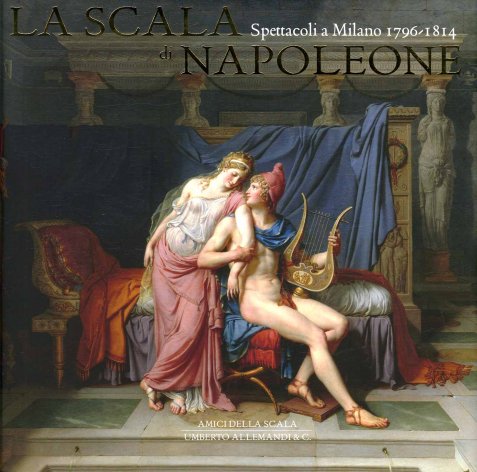Napoleon and La Scala. Performances in Milan 1796-1814
by Vittoria Crespi Morbio. Essays by Vittoria Crespi Morbio, Arches of Glory; Alain Pillepich, Milan Capital of Italy; Matteo Collura, Bonaparte Rhymes with Art. Collection «December Seventh». Amici della Scala – Umberto Allemandi & C., Turin 2010. Italian edition, pp. 200.
The Milanese, Stendhal wrote, were “people who had been bored for a century” when General Bonaparte entered the city at the head of his young army on May 15, 1796. That day changed Milan’s appearance forever. Social life, passion for beautiful things, aesthetic discipline ruled by new canons, fashion exemplified by the figure of Josephine and then Eugène de Beauharnais’ wife, beloved Augusta Amalia, the craze for performances of drama, dance and music turned the city into a dazzling, lavish capital. Painters like Andrea Appiani, the great scenographers, Paolo Landriani, Giovanni Perego, Alessandro Sanquirico, a crowd of city planners, architects, expert ornamenters, changed the countenance of Milan and reflected Napoleon’s magnificence in the spectacular productions at the Teatro alla Scala. In less than twenty years the soil became fertile: with young Gioachino Rossini’s debut the great season of the romantic melodrama was launched.
